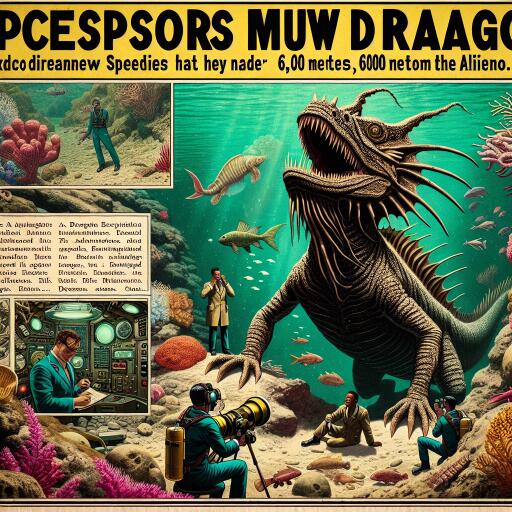
Scientists Discover New ‘Mud Dragon’ Species 6,000 Meters Below the Antarctic
Kinorhynchs, diminutive marine invertebrates ranging in size from 100 micrometers to 1 millimeter, are pivotal components within marine ecosystems. They belong to a group known as meiofauna, which perform a critical role in maintaining the ecological equilibrium of oceanic environments. Often referred to as ‘mud dragons,’ these creatures inhabit the ocean floor, contributing significantly to the marine web of life.
A recent breakthrough by an international team of scientists, spearheaded by the Complutense University of Madrid, has uncovered a previously unknown species of kinorhynch in one of Earth’s most mysterious biomes. Named Echinoderes australis, this species was identified at a staggering depth of 6,000 meters in the South Orkney Trench of the Antarctic Ocean. This discovery not only enhances our understanding of kinorhynch biodiversity in hadal zones—regions deeper than 6,000 meters—but also adds to the scant list of known species residing at such extreme depths. Previously, only two kinorhynch species were documented in hadal environments.
The findings, published in the zoological journal Zoologischer Anzeiger, emphasize the considerable challenges associated with researching such inhospitable environments. The study depicts the remarkable achievement of discovering a new species in a scarcely explored setting due to the immense technical difficulties involved.
The sampling process occurred during December 2019 as part of the oceanographic venture KH-19-6_leg4 on the Japanese research vessel R/V Hakuho-Maru. Stratification was employed to separate the sediment into fine layers, each one centimeter thick, down to a depth of five centimeters. Through a flotation method, the kinorhynchs were painstakingly extracted from the sediment.
Following the collection, meticulous separation of the kinorhynchs was conducted by hand under a binocular microscope at the University of Southern Denmark. For the identification and comprehensive analysis of the species, optical microscopy (LM) and scanning electron microscopy (SEM) were utilized alongside interactive keys and specialized bibliographic resources.
This ambitious study was a collaborative effort involving numerous esteemed institutions, including the Complutense University of Madrid, the University of Southern Denmark, the Federal University of Rio Grande in Brazil, the Japan Agency for Marine-Earth Science and Technology, and the French Institute for Research in Exploitation of the Sea.
According to statements from involved researchers, the expedition took various samples for diverse research objectives, employing a multicorer (MUC) to ensure minimal disturbance to the sediment’s surface layers. This sophisticated instrument is specifically designed for sample collection in such sensitive marine contexts, preserving the natural state of the samples.
This remarkable discovery is not just an addition to the annals of biological taxonomy; it serves as a reminder of the vast, largely unexplored wonders that lie beneath the ocean surface, waiting to be uncovered by human curiosity and technological advancement. The ongoing investigation of these realms is crucial to understanding life’s adaptability in extreme conditions and the interconnected balance of Earth’s ecosystems.





Leave a Reply